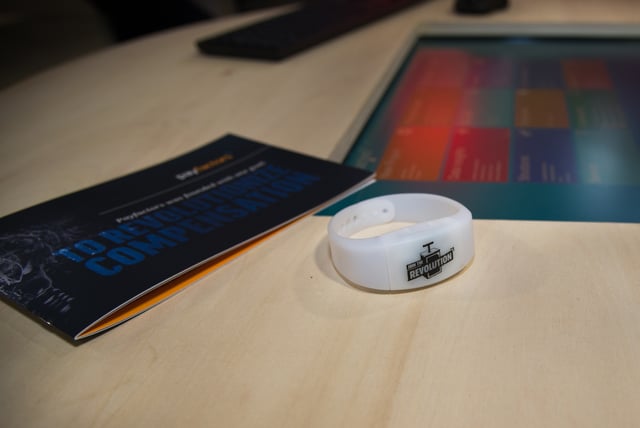Five in Five: Trade Show Exhibits Through The Experiential Lens
Each month, our President and CEO Michael McMahon gives his key insights; five tips, tricks, or words of wisdom on a topic that's prevalent to the industry, his experience, or a current trend. Read this month about the transition from traditional trade show booths to the experiential environment and learn how to keep your company's integrity front of mind when planning.
If you’re reading this, you are probably comfortable with exhibiting at a trade show, however you may not be familiar with creating an experience that influences attendee activity. Depending on your goals, that activity could be focused on volume of leads, or perhaps a more selective targeted approach to a particular segment of the attendee population. Of course, there are always expectations for greater attendee insights and prospect data to help improve tactical activities on the show floor. Whether your space and place already exists, or will be built from the ground up to your specifications, it plays a huge role in connecting the reality of the experience for your attendee and brand intention.
Within the experiential space, we meticulously prepare for guests to live into an experience in a way that occurs to be authentic and true. We are co-creators of this journey, wrapping brand impact into a shared environment where both prospect and purveyor can coexist authentically. As producers of experiential environments, we combine and create spaces and places utilizing a complex language of touches, textures and content. Ultimately, we intend to live up to the expectations of both brand loyalists and future consumers, all in a way that will create high levels of customer advocacy for your brand and your products.

Payfactors created brand visibility across the floor and attendee engagement though branded wrist bands that lit up to call people back to their environment and invited them to be a part of their team.
Thinking in terms of analogies, brands like Disney, BMW or Apple are quick references that ooze experiential. These are change-makers when it comes to experiential design, and it’s their efforts, along with many other amazing brands, that have moved buyer experience into the forefront of a company’s focus. Even more important, these sophisticated offerings have moved far beyond the point of sale when it comes to brand experience. There is a shared authenticity around their product offering that has far reaching impact on their customers and the evolution of the products they collectively create going forward.
Experiential is a term for describing engagement that is immersive in nature, and typically requires willful collaboration from the user, attendee or follower. The balance of shared control by all parties involved is the secret to an experiential environment. The tipping point often occurs when brand experiences are so reliable that purveyors of the brand and users of the product appear to have a shared culture.
Integrity within the experiential environment is a delicate balance between the planned and the spontaneous. The level of engagement is ultimately an exploitation of known tendencies aligned with specific triggers that will impact the variety of ways that people process experiences. If something is left out, you can completely let down your audience, whether they are devoted followers or curious onlookers.
Five Keys to the Experiential Space through the Framework of Integrity
- Location, Venue, Environment: Whether your space and place is constructed from the ground up to specifications, or existing, it plays a huge role in connecting the reality of the experience for the attendee with your intended brand reality.
- Audience Expertise: While there’s high value in attending to key influencers, you must maintain a student’s mentality toward the needs and wants of your desired attendee, prospect or followers. Their thoughts, opinions and actions will always play a role in the success of the overall experience.
- Design: Unless you have the resources to be innovative and experimental, stick with what you know. Experiential designers create immersive experiences that incorporate a symphony of tactics that come together seamlessly to achieve your goals.
- Brand Impression: Nobody can do Times Square like Times Square, because there’s only one New York City. Brand messaging and impact shouldn’t be shot at people unless you know you can get away with it. Keep your focus and trust your plan.
- Collaborate: Experiential environments aren’t the result of segmented purchasing of services, solutions and resources. They require the insight and experience of a primary producer in order to achieve a seamless attendee or user experience.
The 21st century is bringing us both information and change at an alarming pace; experiential design is here to stay. The key to survival is to maintain brand integrity while you seek to move and inspire prospects and followers. Experiential design and production require a more sophisticated approach to the entire process, however, your efforts will produce evidence and metrics that will impact brand experience and ultimately, your bottom line.

Topics: From the Experts, Authentically Us, Our People, Five in Five
